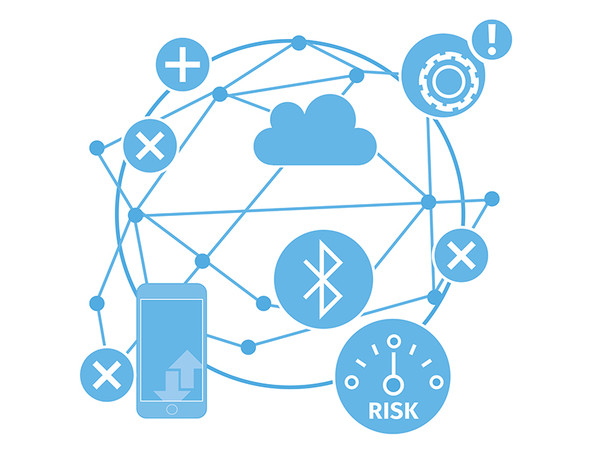The brave new world of the IT believers
Many people believe that IT-based solutions are an affordable way of being able to hand over their responsibility and solve problems.
But many dangers exist that are unclear to normal lift operators and are presented in a way that is incomprehensible to IT laypeople. Anyone who relies on open data interfaces, Bluetooth and cloud solutions, should bear several risks in mind.
Open data interfaces
1. There are no open data interfaces without repercussions.
2. If two or more different manufacturers are connected with each other in data terms, there is always the risk that one system can cause a disruption in another.
3. Repair then becomes difficult and time-consuming for both system administrators.
4. The cause of the disruption is difficult to identify, which in turn increases the repair time and costs for the operator.
5. Prices are also driven upwards when a system provider changes its software. This could lead to the software of all the systems connected to each other via an open data interface likewise having to be technically adjusted.
6. Software changes in a roughly five-year rhythm; updates are needed for existing software, among other things, in order to minimise security risks.
7. What happens if the provider stops providing support?
Conclusion: As a result, not only do the risks increase for the operator, but also the operating and modernisation costs.
Bluetooth
1. Bluetooth connections are insecure.
2. Since there are providers who for example can program a lift control via Bluetooth, this can be risky for the operator. For example, hackers can influence the flush alignment of the lift car or manipulate fire controls.
3. Bluetooth interfaces are frequently offered, because the lift fitter then no longer has to get into the shaft pit and can also change the software settings from outside via a smartphone app.
4. It sounds tempting: you no longer need any system-related terminal for operation, simply a smartphone - unfortunately, this also applies to those with malicious intent.
Cloud solutions
 Photo: © zak, unsplash / Montage
Photo: © zak, unsplash / MontageIf data is to be outsourced to a cloud provider, operators should take care. For this involves sending data via the Internet – but as is well-known, normal operators cannot protect their Internet access like the Pentagon. Clouds have been hacked and data stolen often enough.
Data can be lost
Finally, the operator has no way of controlling the security of its data. It is dependent on the promises of the provider of the above-mentioned IT services. But data can not only be hacked, but also simply go missing, as the fire in Europe’s biggest computer centre in Straßburg in mid-March showed. What do you do if your data is irretrievably lost due to force majeure, such as a fire?
The question arises whether the brave new world of IT has to be borderless. At any rate, operators must be fully aware that they are putting themselves in someone else’s hands while still bearing full responsibility.
Backup your data!
You think that’s exaggerated? As an operator, you must be aware that not even you can check what changes the lift fitter makes to your lift controller, for example. Just how how dangerous that can be is obvious when you think of a fire controller or fire brigade lift.
The solution? Whether you actually need an IT solution for every small lift and component or whether there isn’t actually a mechanical alternative is worth considering. However, this is increasingly not the case, since the profit margins for IT solutions are much greater than for mechanical ones.
You should at all events always backup the current software status and your data before any changes are made. Of course, our lives are unthinkable nowadays without IT. But always bear in mind: the more IT, the greater the risk for you as an operator! You can minimise the risks, but you cannot eliminate them.
By Peter Berresheim
The author is the owner of PB-Aufzugsberatung and is a member of the advisory board of the LIFTjournal.
More information: pb-aufzugsberatung.de























Write a comment